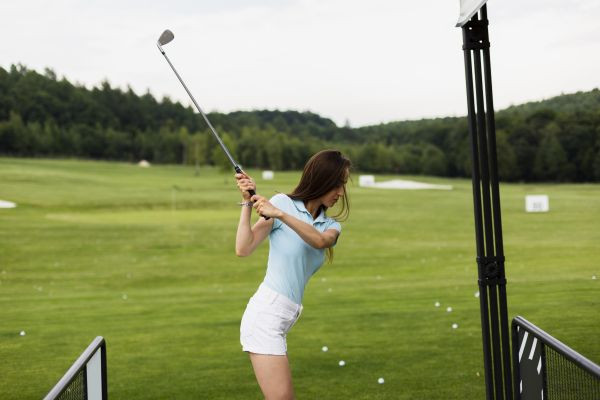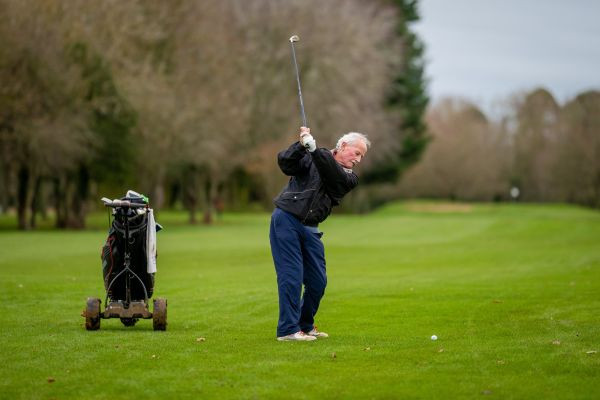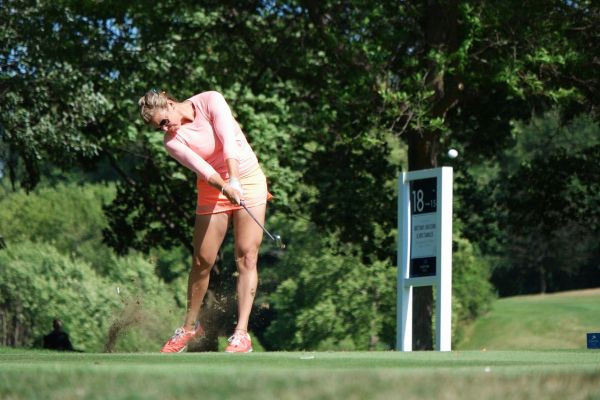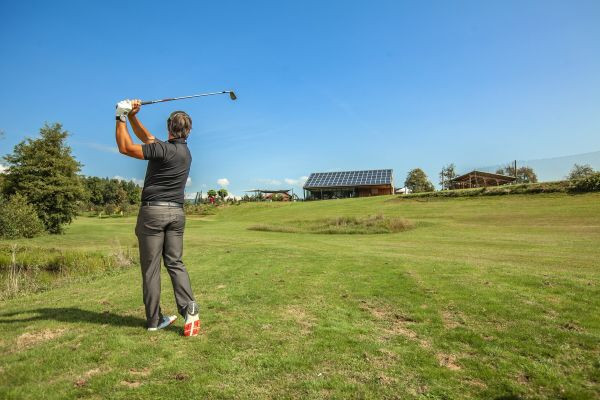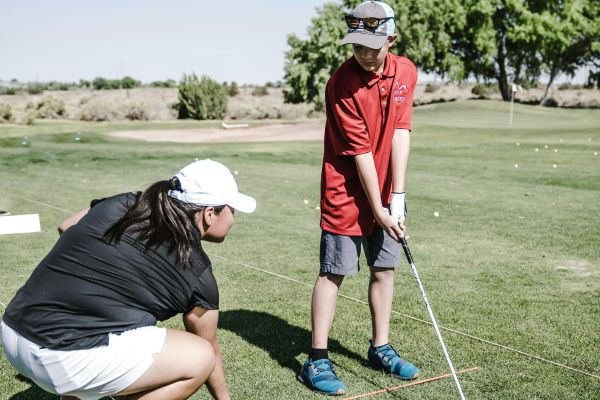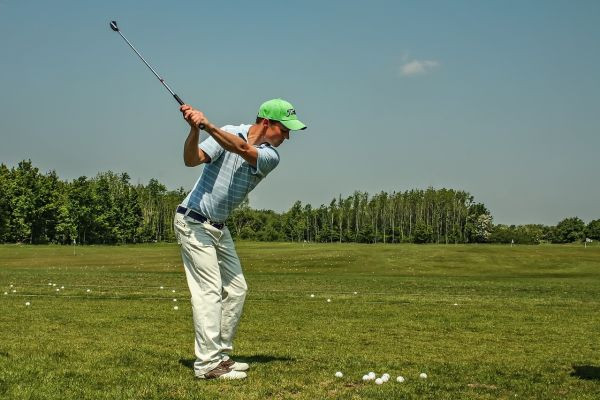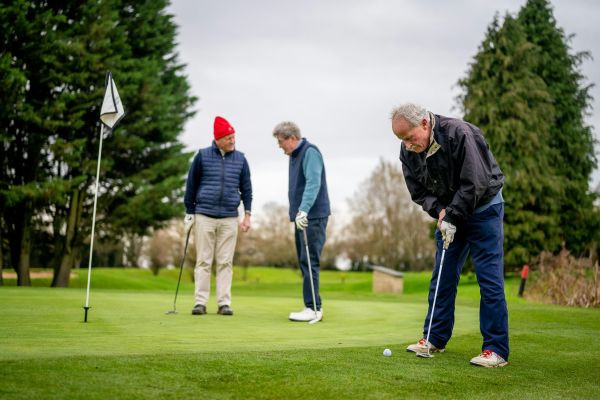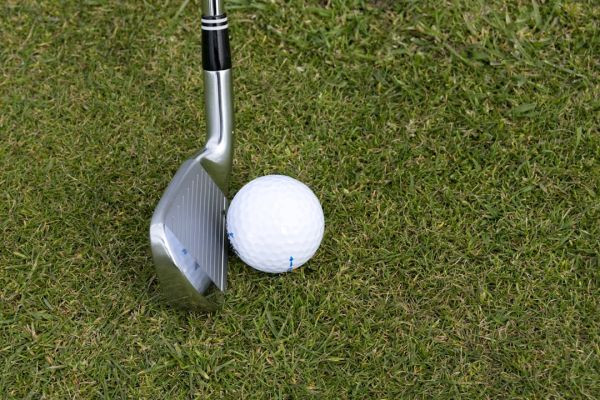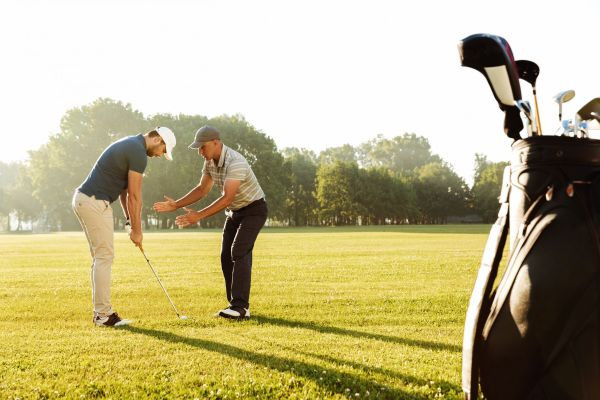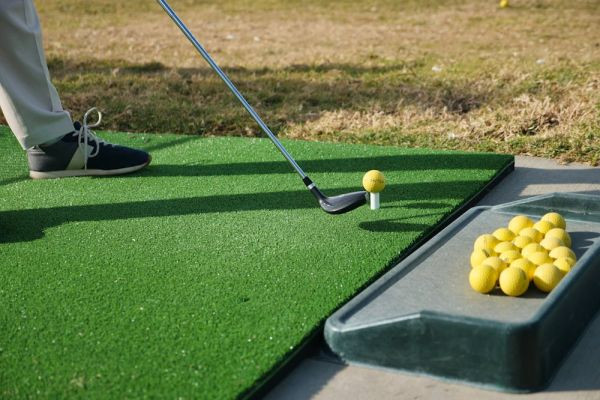The Essential Guide to Perfecting Your Golf Swing Plane
Golf, a fascinating blend of precision, skill and strategy, demands a mastery of several intricate elements, none more crucial than the swing plane. The concept of the "Perfect Swing Plane" stands as ..
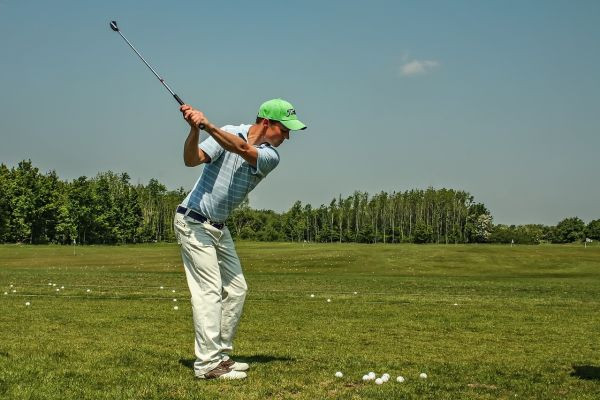
Golf, a fascinating blend of precision, skill and strategy, demands a mastery of several intricate elements, none more crucial than the swing plane. The concept of the "Perfect Swing Plane" stands as a cornerstone of golfing excellence, a dynamic and often elusive aspect that can significantly elevate your game.
In this comprehensive guide, we will explore the multifaceted nature of the golf swing plane, unraveling its complexities to provide you with a clearer path to achieving consistency and finesse in your game. By understanding and applying the principles and techniques outlined here, you'll embark on a transformative journey toward not just improving your swing, but also enhancing your overall understanding and enjoyment of the game.
Understanding Swing Plane in Golf
The concept of the swing plane in golf is both fundamental and intricate. Imagine it as an invisible path or a geometric plane along which your golf club travels throughout the swing. This path is not just a flat, two-dimensional line; it's a dynamic, three-dimensional trajectory that adjusts with every nuance of your movement.
Contrary to popular belief, fine-tuning the swing plane transcends mere club manipulation. It's a symphony of coordinated bodily movements, each part playing a vital role in the harmony of your swing. From the grounding of your feet to the pivot of your hips, from the bend of your knees to the rotation of your shoulders and the extension of your arms, every element of your body contributes to sculpting this vital aspect of your swing.
In this seamless integration, your knees act as the foundation. They set the stage for the fluidity and direction of the swing. Imagine them as the primary hinges that initiate the momentum, influencing the trajectory of the club right from the start. This initial movement sends a ripple effect through your body, channeling power and precision up through your hips, along your spine and out through your arms and hands, finally manifesting in the club’s path.
Understanding and mastering the swing plane is about recognizing and controlling these interconnected movements. It’s about creating a seamless flow from the ground up, ensuring that every part of your body is aligned and moving in harmony towards a common goal - the perfect swing. This comprehensive approach not only improves the accuracy and power of your shots but also significantly reduces the risk of injury by promoting a more natural and balanced movement throughout your golf swing.
The Role of the Knees in Swing Plane
When it comes to mastering the swing plane one Crucial component is your knees. They play a significant role in shaping the motion.
Imagine a sheet of glass starting from your knees and extending towards the golf ball. This visualization isn't just figurative. It serves as a guide to understanding how your knees can impact the swing plane. The movement of your knees during the swing is not about bending or straightening; it involves tuned adjustments that determine the trajectory and stability of your entire swing.
When you start the swing, the right knee (for golfers) plays a pivotal role. It should slightly straighten without locking, allowing for controlled weight transfer that maintains balance. This subtle straightening is essential as it sets in motion both hips and upper body enabling movement. On the side your left knee bends to provide stability while acting as a pivot point around which your body rotates.
The synchronized movements of your knees work together to create a dynamic foundation for your golf swing. They act as the catalysts that set off a series of reactions influencing every part of your swing.
Incorporating the Hips and Shoulders

Image by freepik
When it comes to incorporating the hips and shoulders in the golf swing they play a role as conductors in an orchestra. They shape the flow of energy and direction requiring a combination of strength, flexibility and coordination.
The Role of the Hips:
The hips serve as the powerhouse behind your swing generating power through rotation. Proper alignment and rotation of the hips are essential for establishing your desired swing path. As you begin your backswing controlled hip rotation is key—your right hip ( for golfers) moves backward while your left hip slightly rotates forward. This motion triggers a chain reaction that extends throughout your torso, shoulders, arms and club. During the downswing it is primarily driven by the hips as they unwind and transfer energy up through your body into the ball.
The rotational motion should feel smooth and powerful similar, to the coiling and uncoiling of a spring, where energy is stored and released.
Harmony between Hips and Shoulders:
Equally important to the rotation of your hips is the coordination between your hips and shoulders. Your shoulders should rotate in sync with your hips maintaining the swing plane angle. As your hips rotate your shoulders should naturally follow, creating a motion in your body. It's crucial to maintain a proportional rotation; rotating or under rotating either the hips or shoulders can disrupt the swing plane resulting in inconsistent shots.
Practicing Hip and Shoulder Rotation:
A practical way to visualize and practice this movement is to imagine a pane of glass extending from your hips to the ball. As you practice rotating your hips and shoulders envision keeping this pane of glass intact as it guides the path of your swing. This visualization helps maintain the angle while ensuring that your upper body moves harmoniously with your hips resulting in an efficient motion.
Arm and Club Alignment for an Optimal Swing
Achieving the swing requires attention to the alignment of your arms and club. Once you've established a foundation, with your knees, hips and shoulders it's crucial to ensure that your arms and club are in sync to maximize precision and power.
Harmonizing Arms with the Swing Plane:
When it comes to your arms the key is to harmonize them with the swing plane. As you rotate your body, allow your arms to naturally extend along the path created by the coordinated movement of your lower body. This extension isn't just passive; it actively contributes to maintaining the integrity of the swing plane. Think of your arms as connectors that bridge the gap between your body's power and the club's trajectory.
Club Alignment Dynamics:
Aligning the club with this movement is equally important. The club should feel like an extension of your arms seamlessly integrated into every aspect of your swing.
When you're practicing, pay attention to how the clubhead feels in relation to your hands and arms. The club should complement the movement of your arms, maintaining a consistent angle relative to your wrists and forearms throughout the swing. This consistency in club alignment is essential for delivering a square clubface at impact, crucial for accurate shot-making.
Practicing Arm and Club Coordination:
To effectively practice this coordination, focus on extending your arms and rotating them in line with the imagined swing plane. This exercise should not feel rigid or forced; instead, aim for a natural and fluid motion where the arms and club move as one cohesive unit. Visualize a line or plane extending from your shoulders down through your arms and to the clubhead and try to maintain this alignment throughout the swing. This visualization helps in creating a consistent, repeatable path for the club, which is key to a consistent and powerful swing.
Perfecting the alignment and coordination of your arms and club will significantly enhance the overall efficiency of your swing. It allows for a smoother transfer of energy, better control of the clubhead and ultimately, more consistent and powerful shots.
Common Mistakes and How to Correct Them
In the journey to perfecting the golf swing plane, golfers often encounter a few common pitfalls that can disrupt their technique and overall game performance. Understanding these mistakes and knowing how to correct them is vital for any golfer looking to improve their consistency and accuracy.
1. Swinging 'Across the Line':
Problem: This issue occurs when the clubhead moves outside the intended swing plane, often leading to slices or hooks. It is usually a result of an over-rotation or misalignment in the upper body during the backswing.
Correction: Focus on aligning your shoulders and hips with the target line during your setup. As you swing, be mindful of the club's path, ensuring it stays parallel to this line. Utilize drills that emphasize a straight backswing and downswing path, which will help ingrain a more on-plane motion.
2. Deviation from the Ideal Plane:
Problem: Deviating from the swing plane can lead to inconsistent shots and difficulty in controlling the ball's flight. This is often caused by an incorrect posture or the body swaying too much during the swing.
Correction: Practice maintaining a stable and balanced posture from start to finish. Focus on keeping your head steady and your spine angle consistent. Drills that encourage a stable lower body, such as swinging with your feet together, can help minimize excessive body movement.
3. Excessive Body Sway:
Problem: Excessive sway, either laterally (side-to-side) or vertically (up-and-down), disrupts the swing's fluidity and affects the strike's accuracy. This is often a result of trying to generate power through body movement rather than through proper technique.
Correction: Work on developing a swing that is powered by the rotation of your body around a stable spine. Drills that focus on rotating rather than swaying, such as placing a club across your shoulders and practicing turning your torso while keeping your lower body stable, can be beneficial.
4. Incorrect Hip Rotation:
Problem: Improper hip rotation can throw off the entire swing plane. Either over-rotating or under-rotating the hips can lead to a misaligned swing path.
Correction: Ensure that your hip rotation is synchronized with the rest of your body movement. Practice drills that isolate hip movement, focusing on a controlled and balanced rotation that complements your arm and shoulder movements.
The Stable Fluid Spine Concept
The concept of the Stable Fluid Spine is an essential element in achieving a consistent and effective swing plane. It acts as the axis around which all other components of the swing revolve. Understanding and mastering this concept is crucial for any golfer looking to elevate their game.
Understanding the Stable Fluid Spine:
The Stable Fluid Spine refers to the ideal posture and alignment of the spine throughout the golf swing. It's about maintaining a natural, slight tilt of the spine away from the target, which is key to facilitating a smooth, inside-out swing path. This tilt should be comfortable and not strained, allowing for a natural rotation of the body during the swing.
Benefits of a Stable Fluid Spine:
Maintaining a stable yet fluid spine offers several advantages. Firstly, it helps in creating a consistent swing plane, as it provides a reliable axis for your body to rotate around. Secondly, it contributes to better balance and control, reducing the likelihood of erratic swings. Lastly, it aids in generating more power by allowing a more efficient transfer of energy from your lower body through your torso to your arms and into the club.
Exercises for a Stable Fluid Spine:
To reinforce this concept, there are several exercises and drills you can practice:
Spine Tilt Drills: Practice setting up with the correct spine tilt, ensuring it’s consistent throughout your swing. Use a mirror or video feedback to check your posture.
Rotation Exercises: Work on exercises that promote a healthy rotation of the torso while keeping the spine angle constant. This can be done with or without a club, focusing on smooth, controlled movements.
Core Strengthening: Incorporate core exercises into your routine. A strong core is essential for maintaining spine stability and fluidity during the swing.
Flexibility Workouts: Engage in flexibility exercises, especially those that target the back and hips, to ensure that your spine can maintain its tilt without causing discomfort or strain.
Incorporating the Concept into Your Swing:
As you practice your swing, consciously maintain the stable yet fluid spine position. This will feel awkward at first, but with time it will become a natural part of your swing mechanics. The goal is to achieve a motion where your spine serves as a steady fulcrum around which the rest of your body can efficiently rotate.
The concept of the Stable Fluid Spine goes beyond the aspect of your swing. It's about creating a coordinated movement that enhances every aspect of your golf game. By dedicating time to understand and practice this concept you'll not only improve your swing plane but also enhance your overall ability to consistently execute powerful golf shots.
Practice and Persistence: Building Muscle Memory
Perfecting the golf swing plane requires practice and determination. The goal is to develop muscle memory so that the correct movements feel natural and automatic.
Effective Practice Techniques:
- Focused Drills: Incorporate exercises that target each element of your swing. Quality is more important than quantity; a few executed swings are more beneficial than unfocused attempts.
- Feedback and Adjustment: Use mirrors, video analysis or coaching to receive feedback on your swing. Making adjustments based on this feedback is crucial for refining your technique.
- Varied Practice: Vary your routine by using clubs and practicing in various scenarios to adapt your swing to different course conditions.
Maintaining Persistence:
Improvement in golf often happens gradually. It's important to persist when progress seems slow. Celebrate improvements as part of your journey towards mastering the sport. To improve your golf skills make sure to incorporate practice into your routine even if it's a few swings at home. Consistency is key when it comes to maintaining and enhancing your abilities on the course.
By dedicating time to practice and staying committed to your efforts you'll develop a consistent swing plane. This will not make your golfing experience more enjoyable. Also lead to better results.
Frequently Asked Questions (FAQs)
What is the golf swing plane and why is it important?
Golf swing plane refers to the path that your golf club follows during a swing. It's not a line; it's a dynamic three dimensional trajectory that adjusts with every movement you make. The reason why it's important is that having a swing plane helps in achieving powerful shots ultimately improving your overall game performance. Mastering this aspect can have an impact on enhancing your golfing skills.
How do the knees affect the golf swing plane?
One crucial factor in determining the swing plane is the position of your knees. Imagine there's a pane of glass originating from your knees extending towards the golf ball – this visualization can help you understand how much influence your knees have on the swing plane. For golfers, slightly straightening the right knee while bending the left knee during the swing creates a stable base and influences how the club moves through its trajectory. The key to a swing is the synchronized movement of your knees. This sets the foundation for a well executed swing.
Why is hip and shoulder coordination important in a golf swing?
To maintain the swing plane throughout your swing it is crucial to coordinate your hips and shoulders. Your hips generate power through rotation so as you start your backswing ensure controlled rotation of your hips. Your shoulders should follow the path keeping the angle of the swing plane consistent. This coordination creates an efficient motion enhancing both accuracy and power in your shots.
What should I focus on for proper arm and club alignment?
To achieve alignment of your arms and club focus on harmonizing their movement with the established swing plane. As you rotate your body, allow your arms to extend naturally along the path defined by the coordinated motion of your lower body. The club should feel like an extension of your arms seamlessly integrated into every part of the swing. Practicing this coordination between arms and club ensures that you have a clubface at impact and results in shots.
How can I correct a swing that goes 'across the line'?
If you need to correct a swing that goes "across the line " begin by aligning your shoulders and hips with the target line during setup. During the swing pay attention to keeping the club's path parallel to this line.Remember that these adjustments contribute to a natural golfing technique while improving accuracy, in hitting shots. To improve your golf swing it's important to focus on drills that emphasize a backswing and downswing path. This will help train your muscles to move in an accurate manner.
What is the Stable Fluid Spine concept in golf?
The concept of the Stable Fluid Spine is, about maintaining a natural tilt of the spine away from the target throughout your entire golf swing. It acts as the axis around which all elements of your swing revolve. By following this concept you'll achieve a swing plane, better balance and efficient power transfer. It's an aspect that contributes to an effective golf swing.
What kind of exercises can help improve my swing plane?
Incorporating exercises that target spine tilt, torso rotation, core strength and flexibility is highly beneficial for improving your swing plane. Specifically focusing on the back. Hips can yield results in maintaining a stable yet fluid spine during your swing. This stability is key for achieving consistency and effectiveness, in your golf game.
Can practicing at home help improve my swing plane?
It's worth noting that many aspects of improving your swing plane can be practiced at home within space. Engaging in practice helps develop muscle memory and enhances swing performance. You'll have the opportunity to work on aspects of your swing independently while enhancing your golfing skills.











